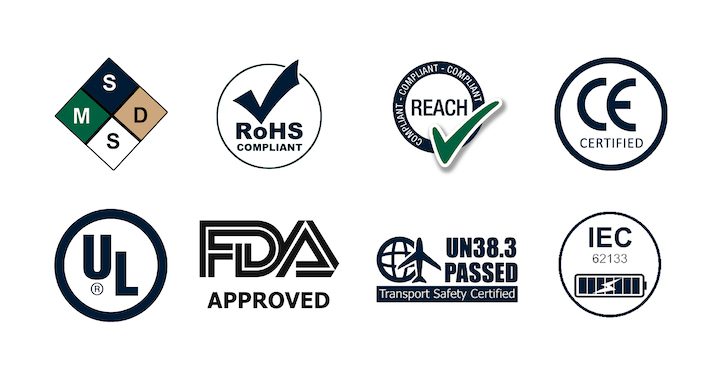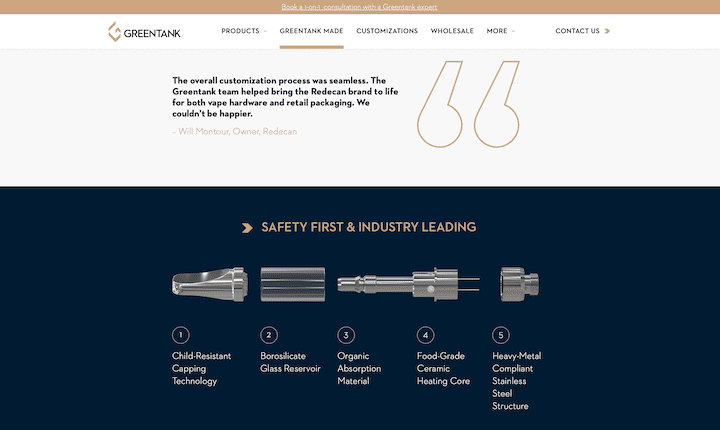Posted by Dave Kaplan
3 years ago / November 3, 2020
Transparency Is The New Standard For Vape Hardware


In its short period of existence, the cannabis vape space has already experienced two major obstacles. Yet, in both instances, it has come out the other end stronger and better prepared for future success.
The industry’s heavy metal contamination scare of early 2019 played a pivotal role in the establishment of strict contaminant testing requirements at the state level in the U.S. and at the federal level in Canada. The EVALI crisis that followed soon after, although almost entirely the result of unregulated, black market products, nevertheless paved the way for the legal cannabis vape industry to make massive strides toward safer materials and better oversight.
Both of these obstacles were learning moments for our nascent industry, forcing hardware manufacturers to look inward and reconsider their supply chains and operations. Just as importantly, they also highlighted the need for across-the-board transparency throughout the cannabis vape industry.
The responsibility of total transparency begins with hardware manufacturers, who must be fully compliant and above board with respect to their operations and products if they wish to succeed in the current market. Licensed producers, multistate operators and brands can no longer afford to rely on their suppliers’ claims alone. They need to vet potential hardware manufacturers thoroughly to verify that every aspect of their operations and every material in their hardware is above reproach. Failure to do so could ultimately be catastrophic for their reputations and their bottom lines.

As a result, going above and beyond to disclose all non-proprietary product information is now as much a priority for hardware manufacturers as ensuring that their hardware works as advertised. This includes providing potential customers with detailed bills of materials, full suites of material safety data sheets for every product, all pertinent product and factory safety certifications, even complete listings of the safety protocols used at their manufacturing sites. It also includes complete rundowns of heavy metal testing results and contaminant levels from certified, independent testing agencies and laboratories, as well as any other types of applicable product test results (child resistance, electrical resistance, battery safety, etc.)
Complete transparency on the parts of hardware manufacturers is only one half of the equation. As a result of the heavy metal and EVALI crises, vape consumers are now more informed than ever before about contaminants, toxins, cutting agents and testing. They expect full access to this information, and cannabis vape brands that are not upfront about every detail of their extracts and the hardware they are housed in are doing themselves a major disservice.

To gain the trust of consumers, these brands must publicize comprehensive lists of the ingredients, cutting agents, cannabinoid/terpene percentages and extraction processes for each of their extracts. They must also include all pertinent testing information, including the facilities where their products were tested, and should provide access to all applicable safety information for the hardware that houses their extracts, such as heavy metal testing results and specific materials used.
Some of this information is not yet required by law, but brands who are not committed to total transparency in every aspect of their operations are certain to get left in the dust by businesses that are.
The question for manufacturers and brands alike, then, is not whether to integrate transparency into their operations but rather how to effectively communicate all of the above information to their customers? Here are a few suggestions:
On The Packaging Itself
This option is the most straightforward, but also presents the least flexibility due to the relatively small size of standard vape product packaging. Brands can circumvent this issue by printing pertinent information about their products and the hardware they are housed in on both the exterior and interior surfaces of their packages. Most brands list some information on the outside of their packaging, but for some reason overlook the valuable real estate on the inside surfaces. Granted, this strategy is better suited to packages that flip open rather than slide out. Brands that use slide-out packaging may want to consider the next suggestion.
Product Inserts
Product inserts, whether just a single sheet or a miniature multipage guide, are one of the most effective and traditional ways of conveying important product information to your customers. It’s also one of the most inexpensive. These inserts are ideal for listing any pertinent product information that didn’t fit on the package’s exterior. Plus, they can be placed directly on top of the vape itself so that your customers will see it before they begin using the device. Greentank uses product inserts to instruct end users how to properly use their hardware, but there’s no reason why brands can’t include an insert of their own into their packaging that details testing results, ingredient lists and bills of materials.
Transparency-Themed Website Sections

If you’re struggling to condense all of your product information into a product insert, or you believe that including loose inserts in your packaging will compromise your product’s aesthetic, consider listing this information on your website instead—ideally in a separate section devoted to transparency. Here, you can showcase your product information and certifications in detail. This option is more expensive and ambitious than printing your product information on packaging or inserts, but it is a worthwhile investment for any hardware manufacturers or vape brands committed to transparency because you will be able to add the information for new product lines here going forward. You can also use links or QR codes on insert cards, or your product’s packaging itself, to direct customers to your transparency page.
Transparency-Rooted Marketing Materials
Another inexpensive option that allows your business to communicate its product safety information is transparency-rooted marketing materials, which can take many forms. Show your customers your testing results, bills of materials, ingredient lists through newsletters, digital decks and posters (perfect for dispensaries), or create collateral that is entirely unique to the industry. Greentank, for instance, was unsatisfied with merely listing its product safety information on its website and opted instead to create the industry’s first compliance guide, a comprehensive 32-page document that lists and contextualizes all of Greentank’s product safety certifications, testing results and manufacturing accreditations.
Apps and AR Codes

Apps and AR Codes are by far the most expensive options on this list, but likely the best suited of the lot to engage consumers in the digital age we live in. These technologies allow consumers to easily access full suites of product and hardware information from their smartphones. Some companies, such as PAX, have had enormous success rolling out this technology and even offer users the ability to adjust their temperature and dose settings from their mobile devices. Not surprisingly, PAX is also regarded by consumers as one of the most transparent vape manufacturers in the industry. There might just be a correlation there.
At the end of the day, it doesn’t matter which of the above options your business decides to use, only that efforts toward complete transparency are made. Because transparency is not a fleeting phase; it’s the future of the cannabis vape industry and brands who don’t want to spend the next half decade catching up to their competitors would be wise to take action now.
(This article was reposted from Cannabis Prospect Magazine‘s September edition)
Filed Under:
Tagged with:
Interested in our products?
Contact us to find out how you can carry the most reliable vape hardware solutions on the market.
General Requests
Logistics
